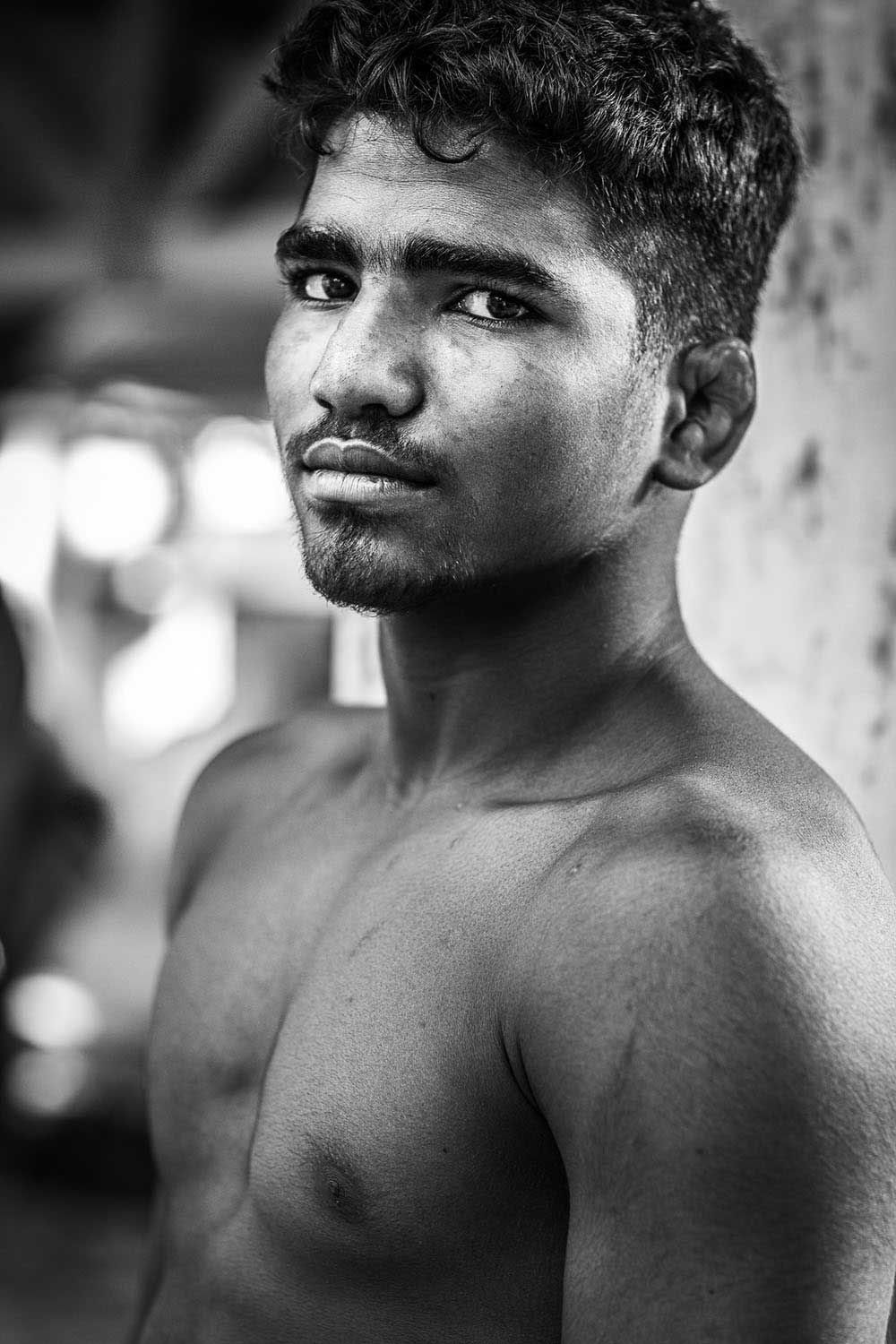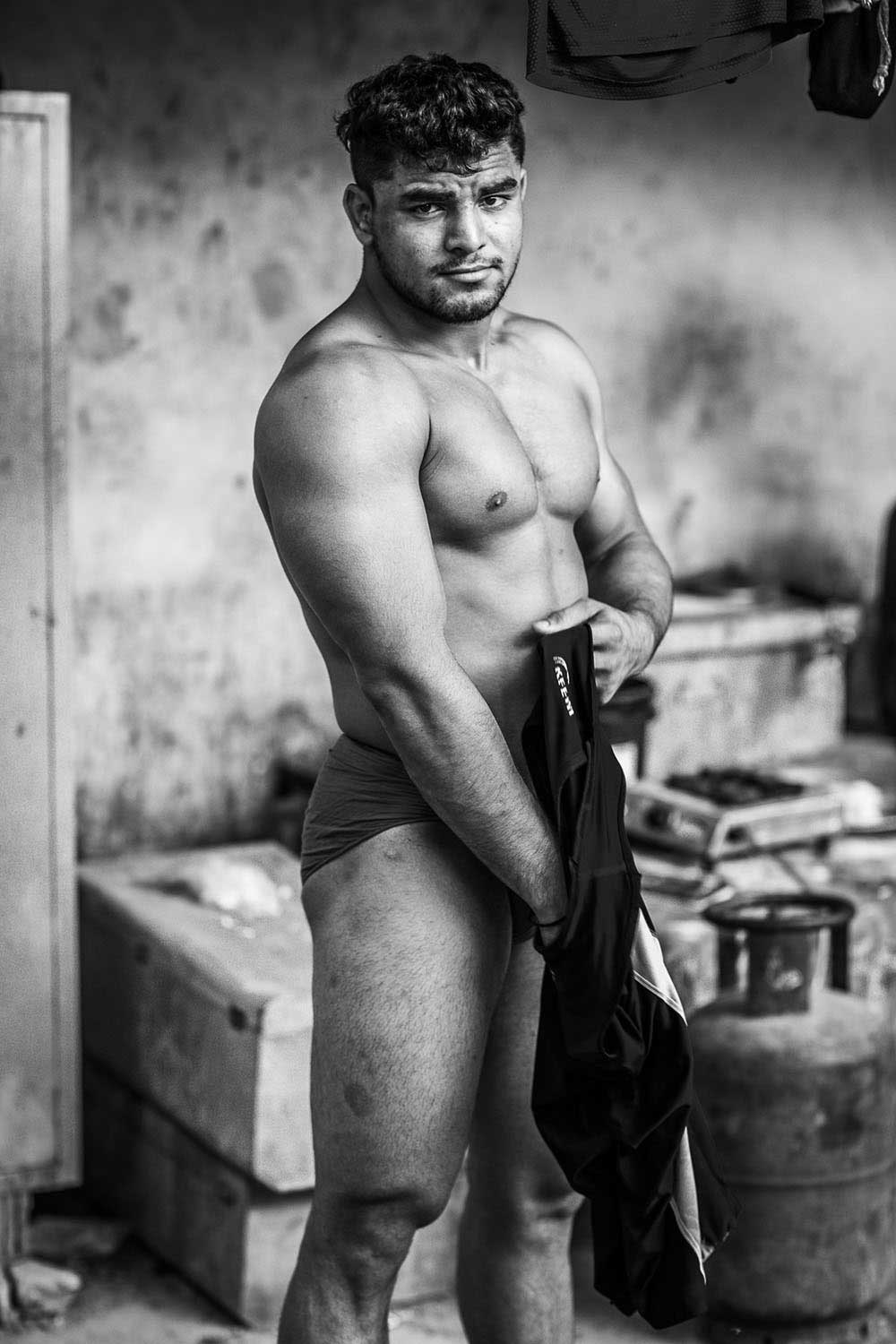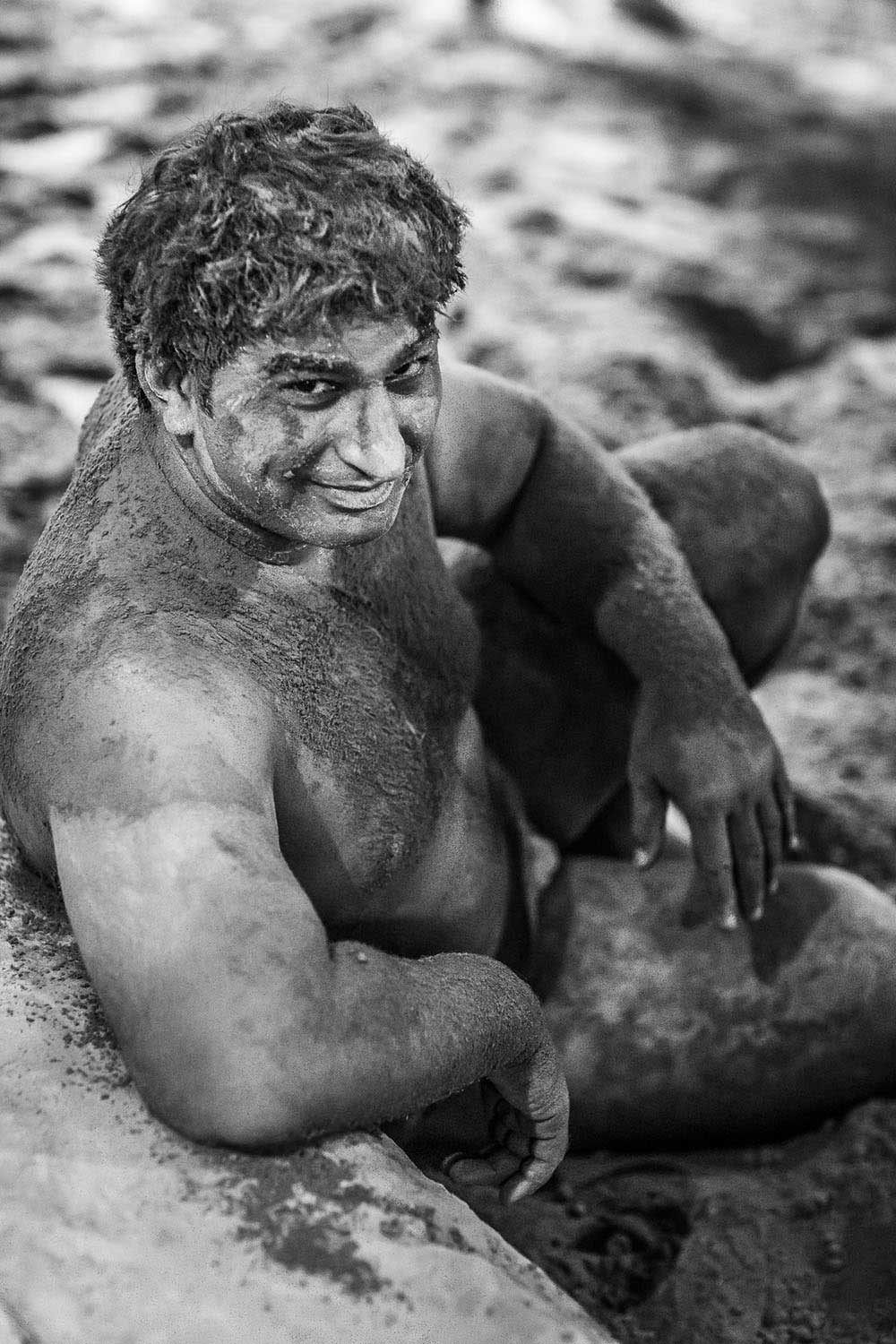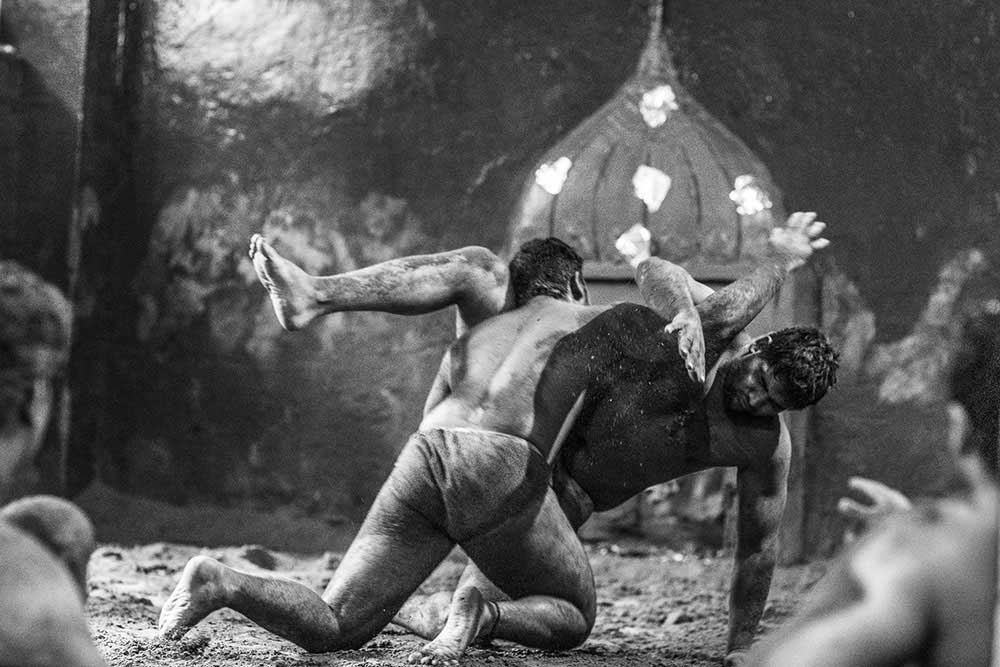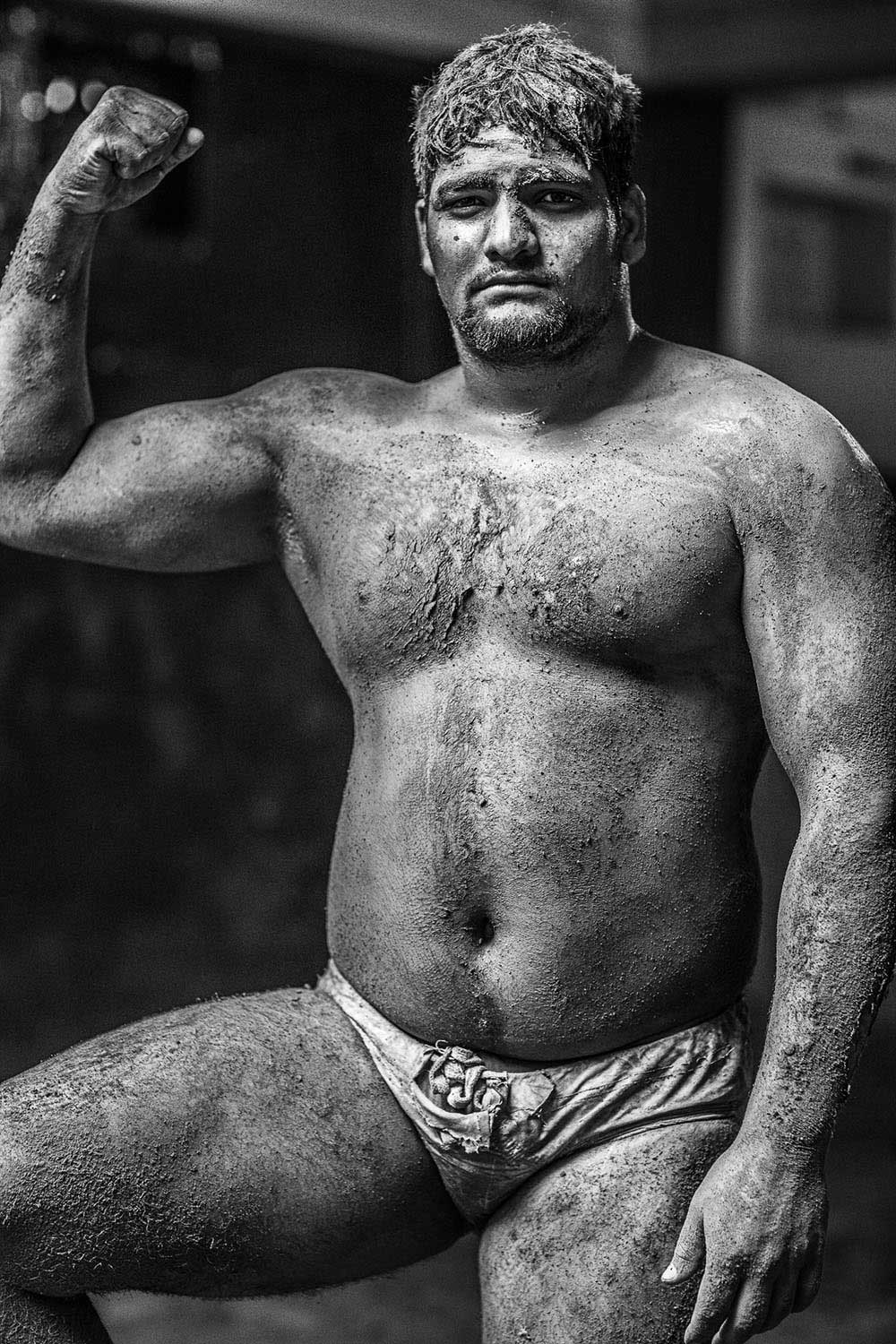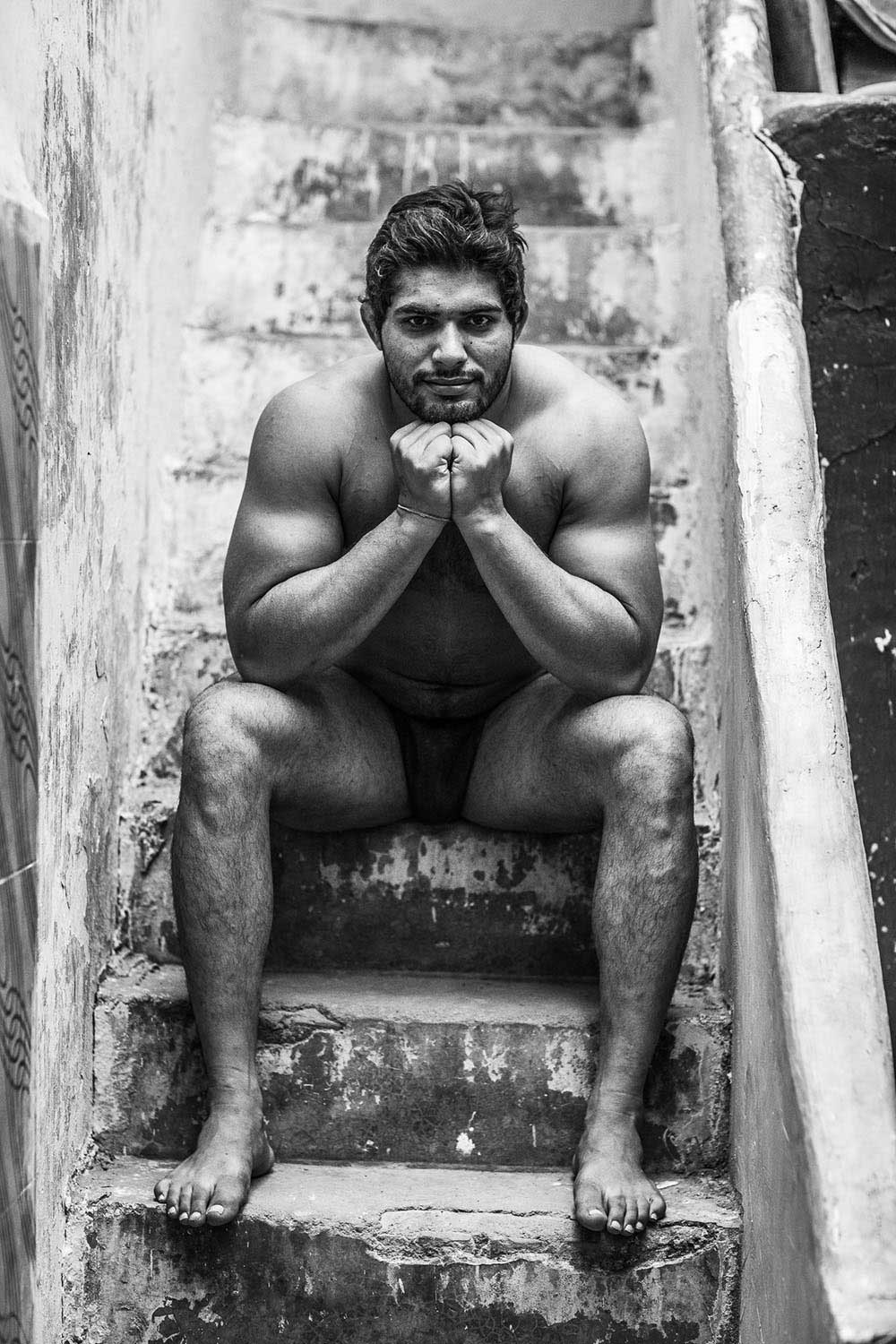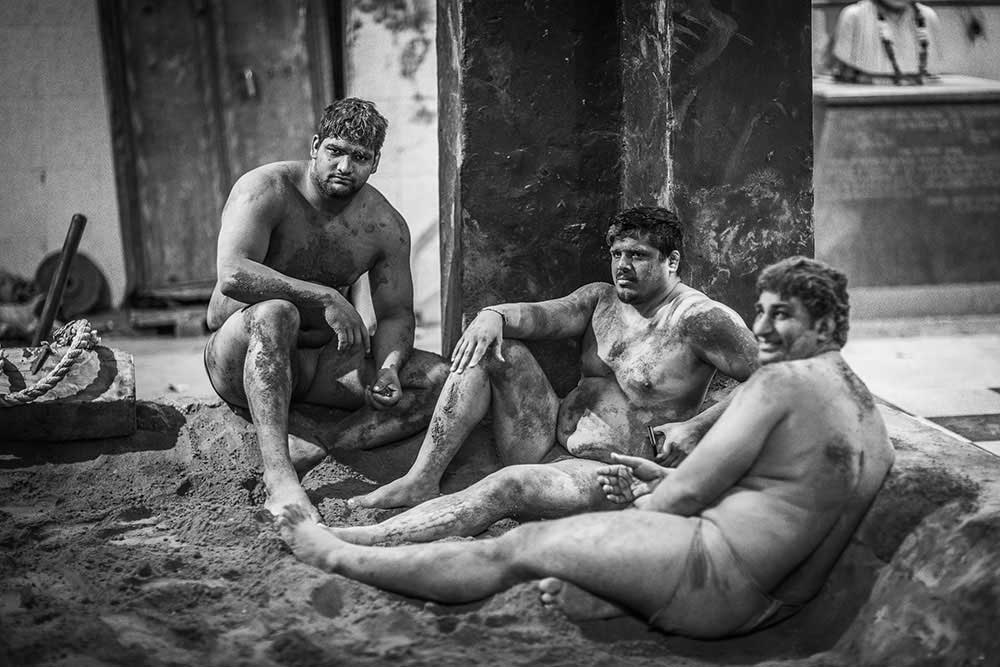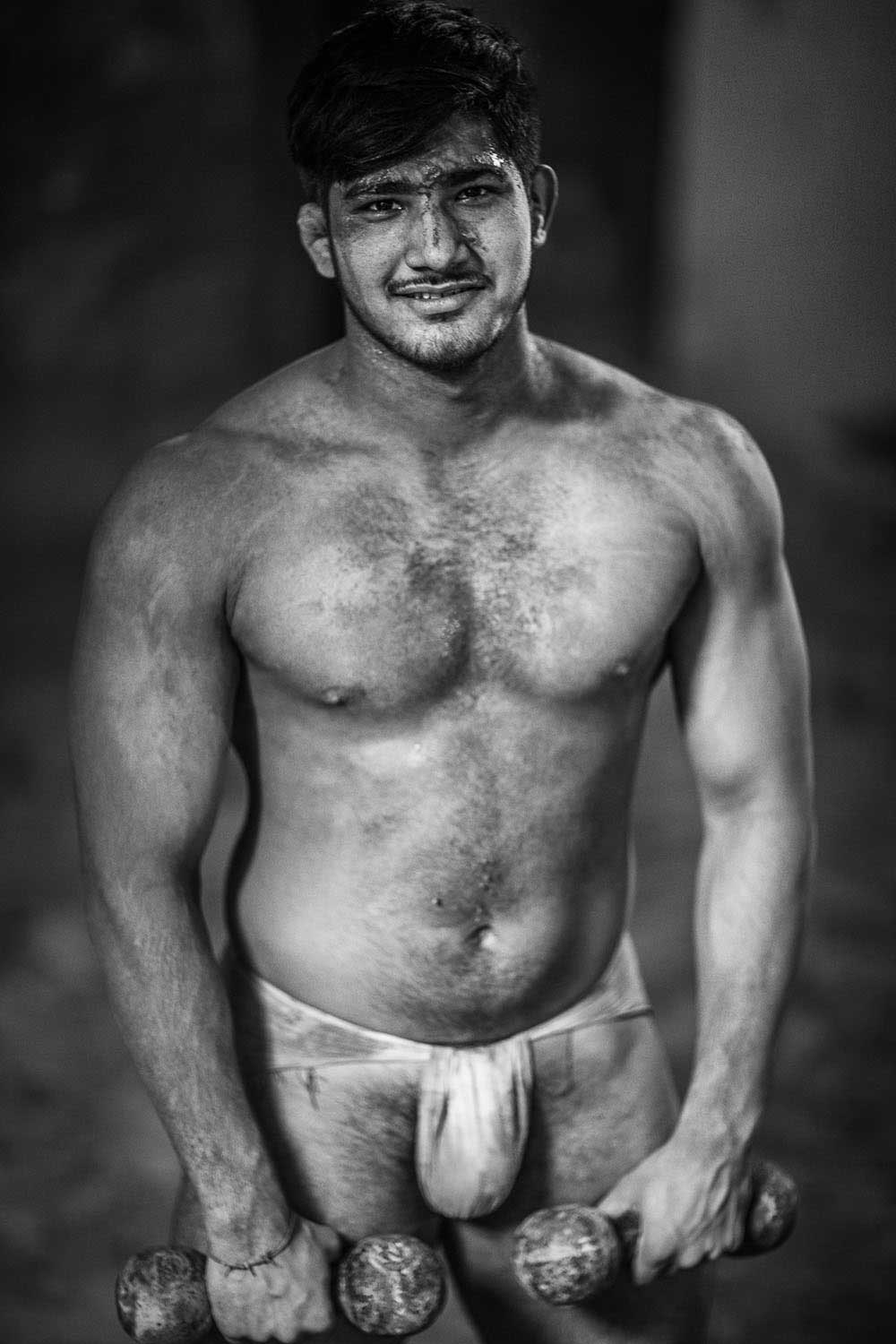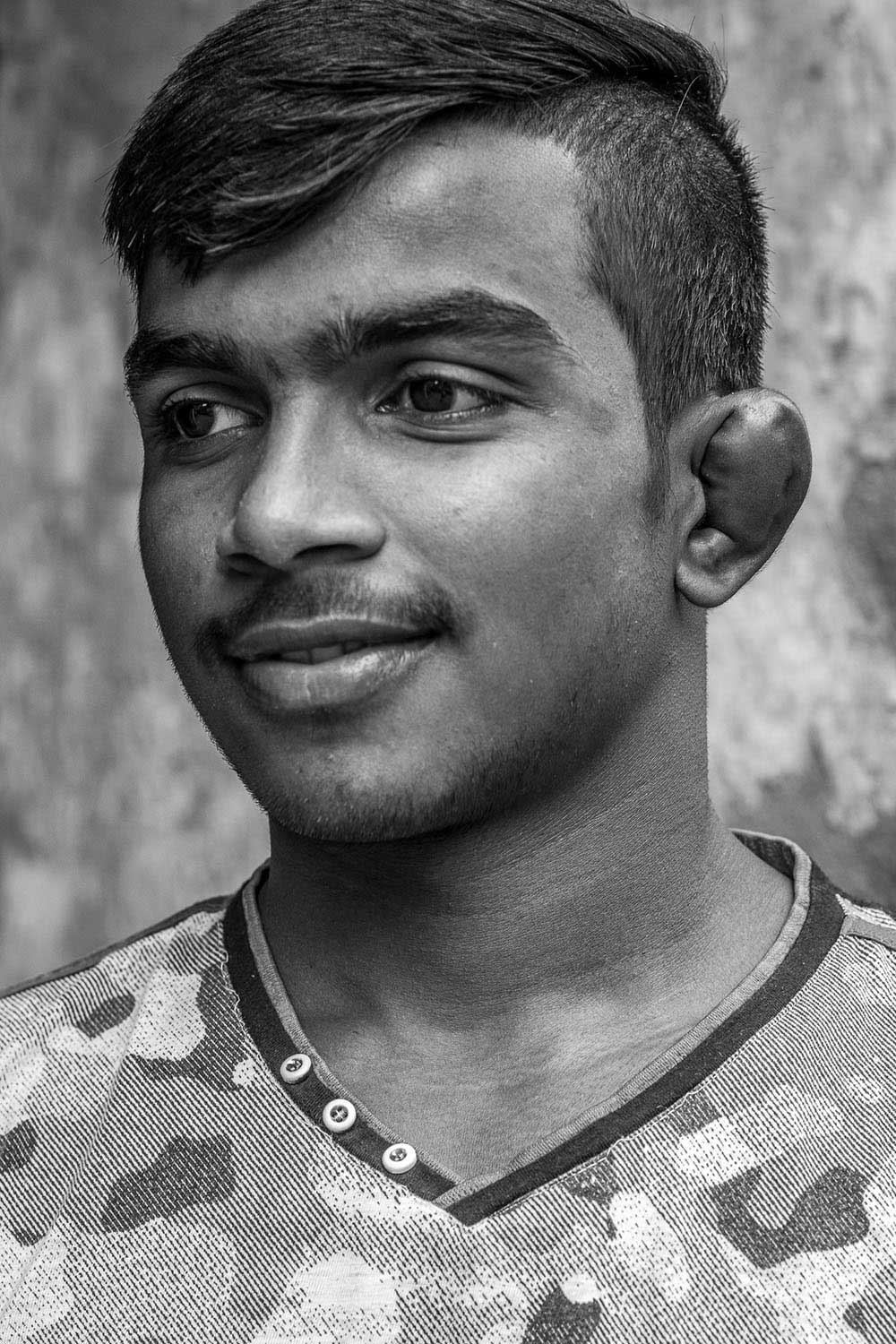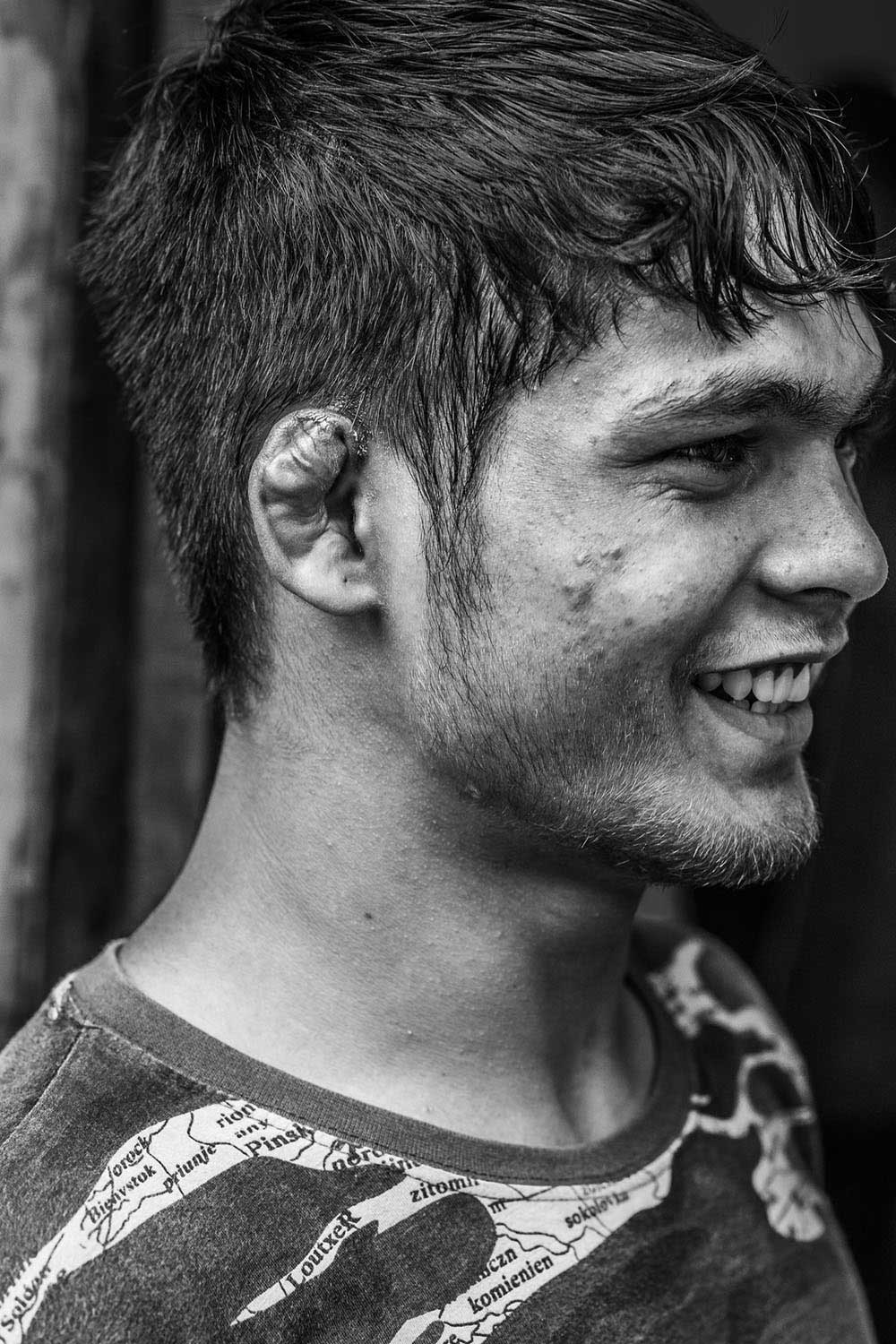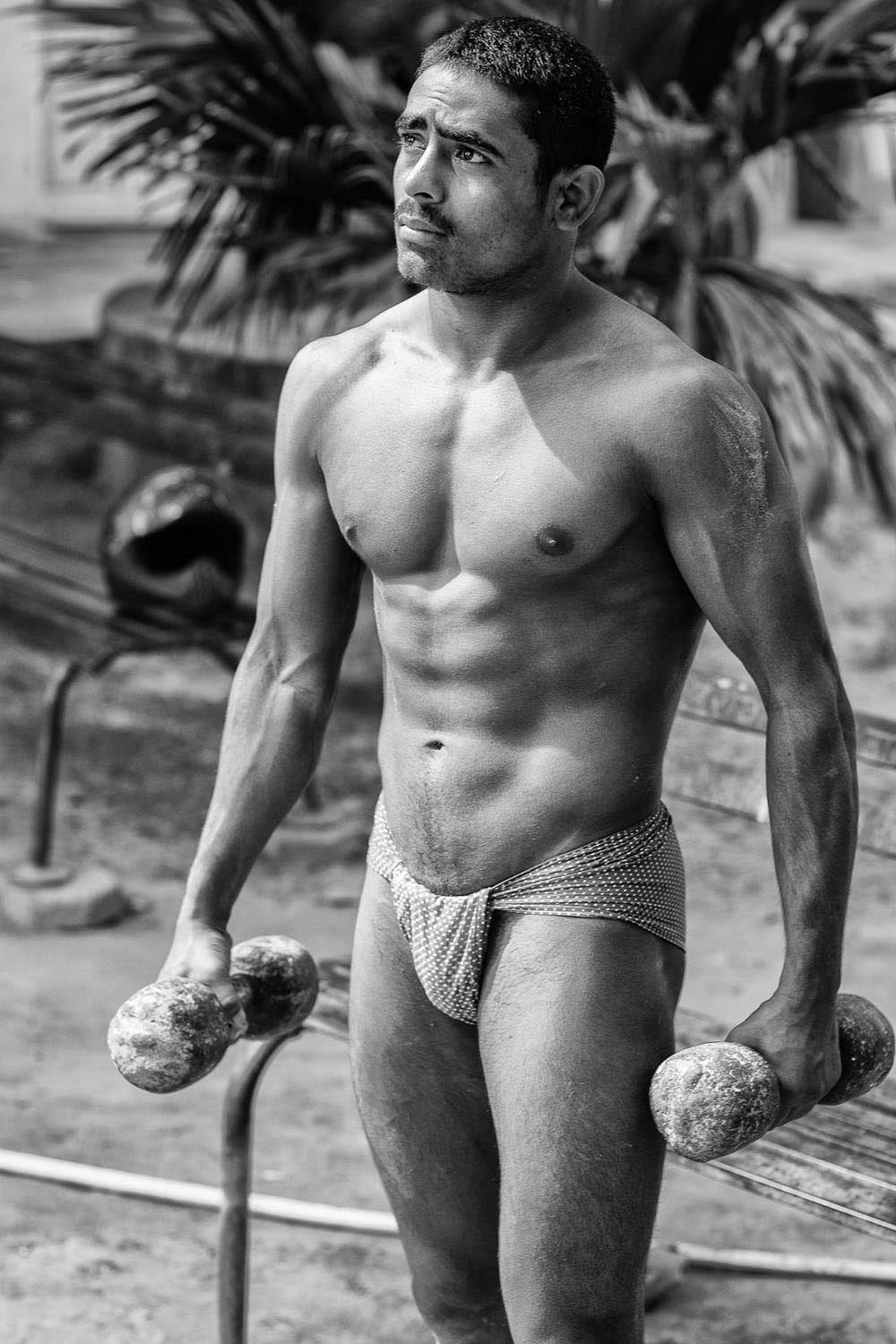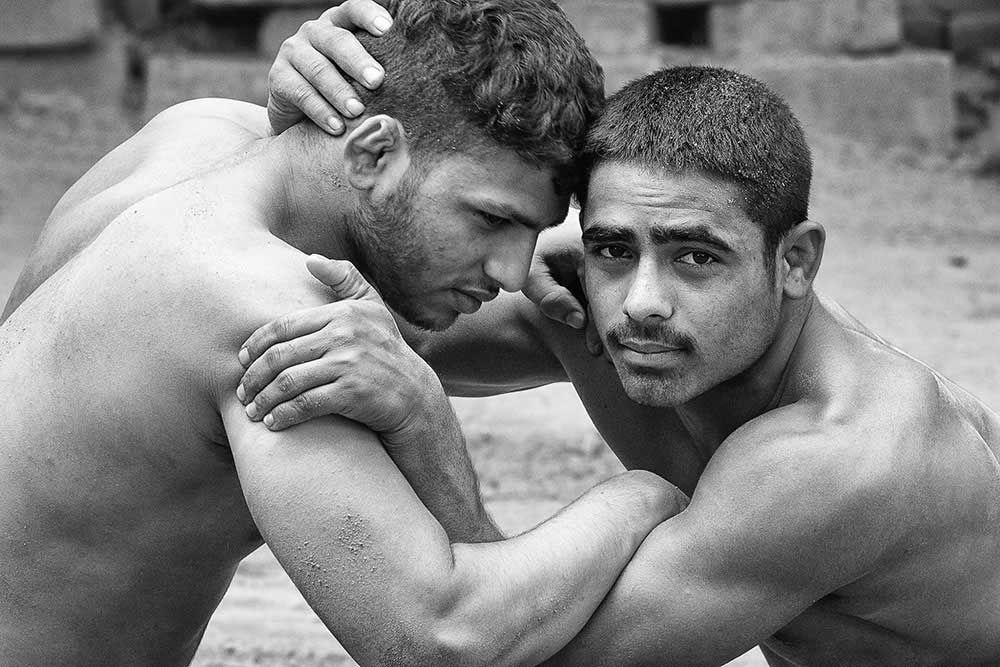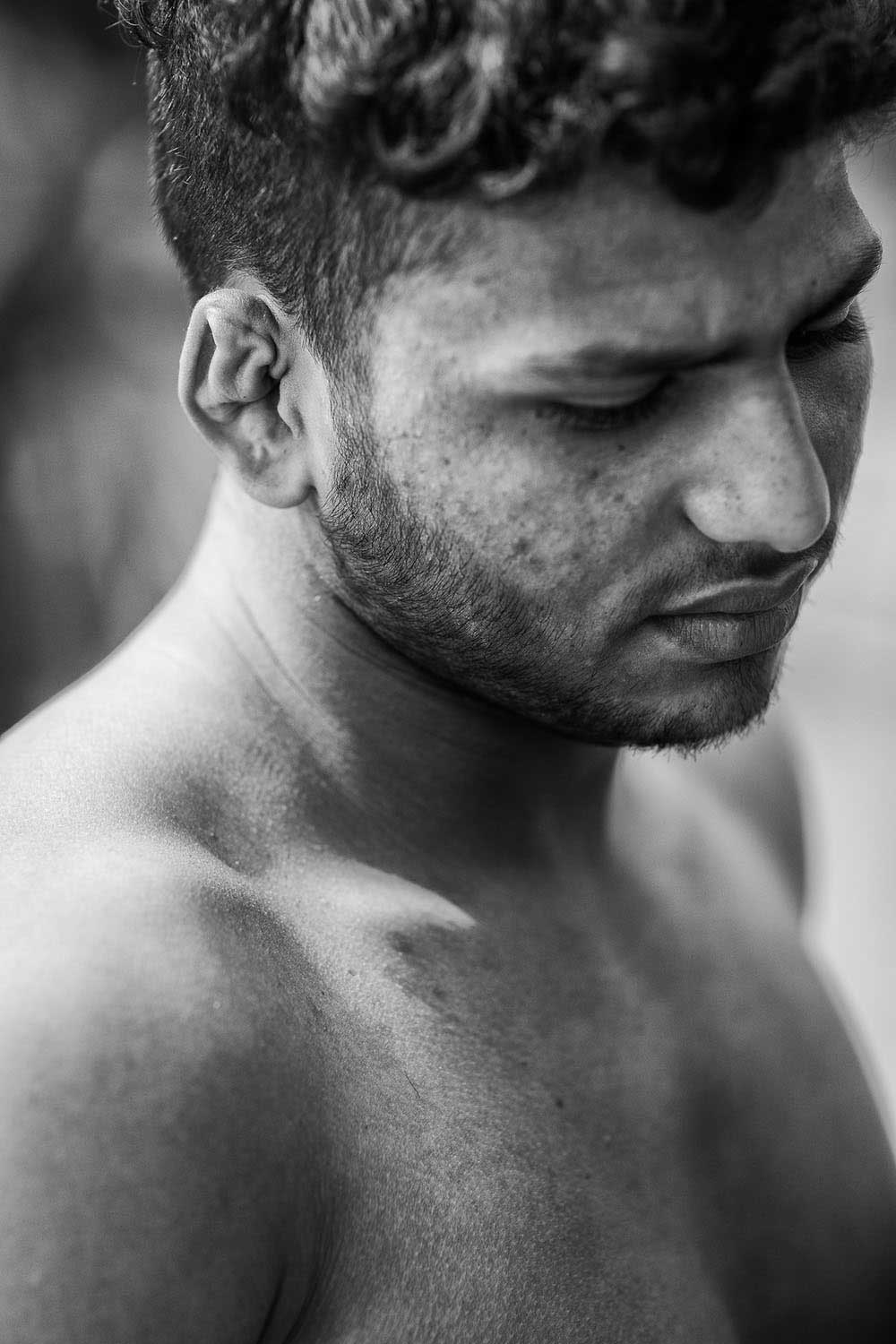“Catch Him!” It’s 5am in the morning, before the smothering heat of Delhi kicks in, and the pupils of one of the wrestling schools are already in a fierce training.
Their daily routine is one of discipline and respect, and of course the 500 daily pushups, six days a week. Pehlwani, also known as kushti, is a form of mud wrestling contested in the Indian subcontinent and is a historic sport dating back to the Mughals.
The words come from the Persian language and mean “heroic wrestling”, already indicating the hard work and dedication involved. In an Akhada, or wrestling school, most students live full time: it’s a dormitory with a strict discipline of practice, where they do not only work on strengthening the body, but also the mind and the soul.
Wrestling, but strength in general, is a big virtue in the traditional caste system society in India. Many of the students are coming from area’s around Delhi challenged by poverty. Becoming a wrestling champion is not only creating respect in society but is also a way out of such poverty.
But during the wrestling practices and matches, a lot of participants get injured. When their heads and ears get squeezed and hit hard in the strong biceps of their opponent, a medical injury called perichondrial hematoma occurs or called “cauliflower ear” or “boxing ear”.
The Cauliflower ear is a deformity of the ear, a bumpy or lumpy appearance on part of the ear, similar to a cauliflower. Its caused by blunt trauma and occurs when blood pools in the outer ear after it’s been hit or struck. This pooling of blood needs to be treated right away, otherwise the ear forever looses its original shape. However, in India these injuries do not get treated, and are seen as Battle Scars. The bigger the deformation, the harder and tougher the fight must have been. The deformed ears are carried with proud and self confidence as “Wrestling Scars”.
About Steven Kruit
Steven Kruit is a photographer orginally from the Netherlands, but has been living and travelling for many years in South East Asia. His travel, portrait and reportage photography focusses on the life and livelihood of people in Asia. [Official Website]



